3 weeks in the Philippines : Itinerary
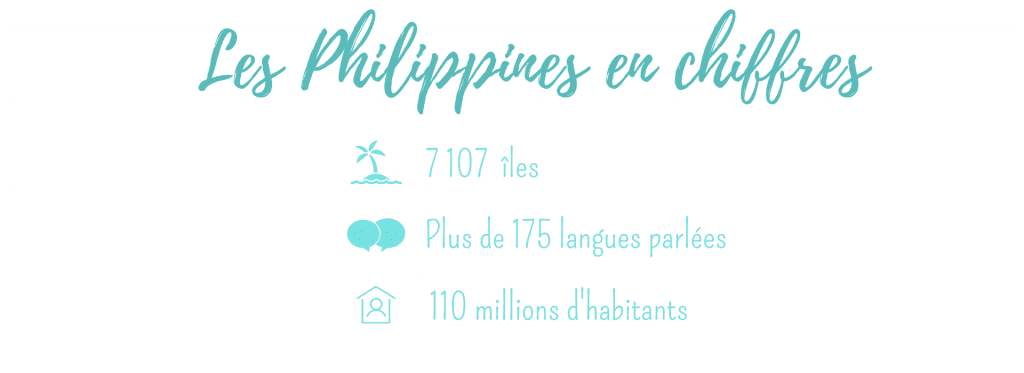

Our 3 week trip to the Philippines
The Philippines is an archipelago of over 7,000 islands, of which about 2,000 are inhabited. The Filipino territory is very vast, so that it is difficult to know where to go if you travel in the Philippines !
In order to guide you as well as possible, we have prepared a detailed itinerary of our 3 weeks in the Philippines. You will find an article dedicated to each island below. The practical information, related to transport, budget, climate and security, are at the end of this page.
Detailed itinerary of our 3 weeks in the Philippines

First stop : Coron
For our first few days in the Philippines, we decided to visit the island of Coron, part of the famous Palawan archipelago.
To discover the best places to visit on Coron island :
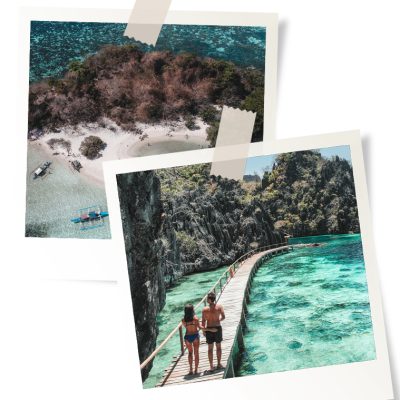
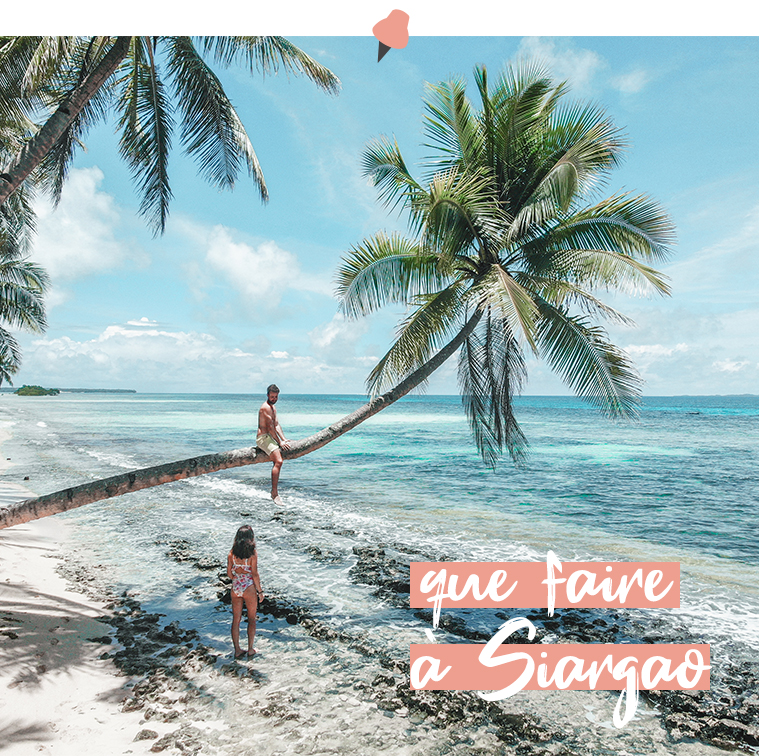
Siargao
The island of Siargao was our favourite stopover in the Philippines! It has a very special atmosphere and is a beautiful island. If you like surfing, this is the place to be.

Siquijor
Less popular than the others, Siquijor nevertheless has many attractions. The island's beaches and waterfalls are well worth a visit. Siquijor is the ideal place to relax !

Bohol
Bohol is a very popular tourist island. It is particularly famous for its Chocolate Hills ! Should you go to Bohol despite the world ? We answer you in the article :
Last stop : El Nido
We hadn’t originally planned to visit El Nido. The reviews we’d read on a few blogs had put us off a little. In the end, we decided to go and make up our own mind about El Nido. We have absolutely no regrets about going.
We can say it without shame : El Nido is magnificent !

Islands in the Philippines, far from mass tourism .
During my trip to the Philippines at the beginning of 2024, I had the opportunity to visit other islands, less well known and far from mass tourism. I highly recommend them if you still have time !

Port Barton
A small coastal village on Palawan, this is an ideal destination for more tranquillity than El Nido and Coron.

Camiguin
The island of Camiguin is the unspoilt jewel of the Philippines. Here you'll find waterfalls, small deserted islands and an atmosphere conducive to relaxation.
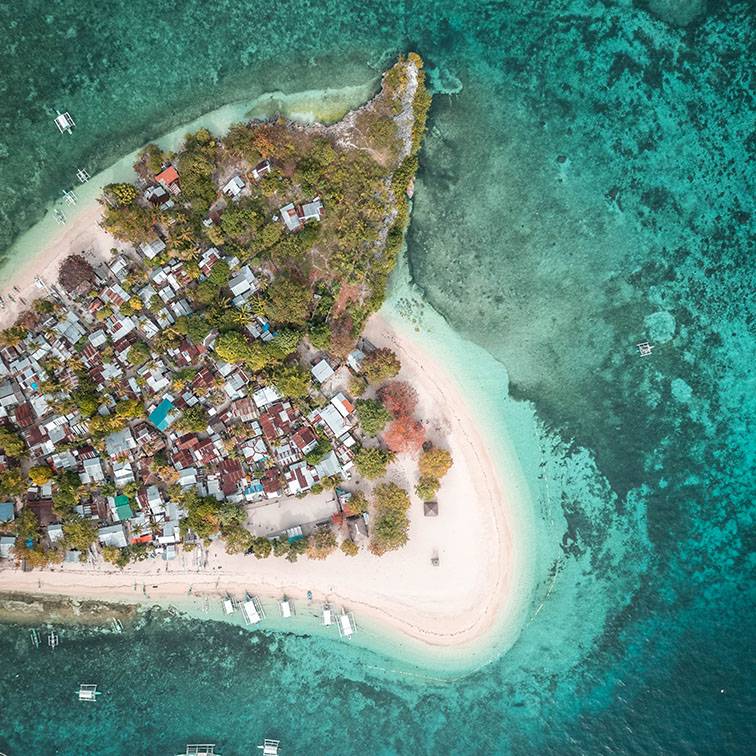
Camotes Islands
The Camotes Islands are calm and untouched by mass tourism. They are home to numerous caves and beautiful white sandy beaches.
📝 Travel to the Philippines : practical information
When should you travel to the Philippines ?
The climate in the Philippines is divided into two periods: the dry season and the monsoon. The best time to travel in the Philippines is obviously the dry season, when the weather is mostly sunny.




> Find your cheapest plane tickets on Ulysse. You can get €10 off your first booking by registering via our link.
How do you get around the Philippines ?
Transport between the islands is one of the major problems of a trip to the Philippines. It is essential that you plan your itinerary in advance. It can quickly become a headache. We advise you to take plenty of time if you are making two journeys in a row (in the event of a stopover). As transport is not always reliable, you run the risk of losing your plane ticket, for example, if your first journey is late.
There are two ways of getting from island to island :
The boat
The most economical solution. Most often, ferries are used. Make sure you get to the port in good time (1 hour before departure), as the companies sometimes overbook. You can buy your tickets on the spot, on the day. We have not experienced any delays on ferry journeys.
The plane ✈️
Tickets can be expensive if you book them at the last minute. So get them in advance as soon as possible. Once again, take a margin if you are taking two flights on different airlines or if you are taking a boat before the plane. If your first journey is delayed, you will not be reimbursed for your second journey! Flights are often subject to delays in the Philippines, particularly internal flights from Manila.
Getting around the islands in the Philippines


What budget for 3 weeks in the Philippines ?
If we compare the cost of living in the Philippines (for tourists) with other countries in the south-east, we come to a conclusion : it’s expensive.
We were unpleasantly surprised by the price of transport, particularly scooter hire, which is twice or even three times more expensive than in Bali. But the most disturbing thing was the often poor value for money of the hotels !
In Vietnam, for example, you can find a hotel with a nice air-conditioned room and swimming pool for €15/20 a night. In the Philippines, for the same price, we found some rather gloomy rooms in guesthouses. Boat trips (island hoping) are also expensive, especially if you take several !

Here’s what we spent in 3 weeks in the Philippines, including accommodation/transportation/food and 3 days on a boat (island hoping). You have to add to that the airfare from France (on average €700) and your other activities, souvenirs etc.
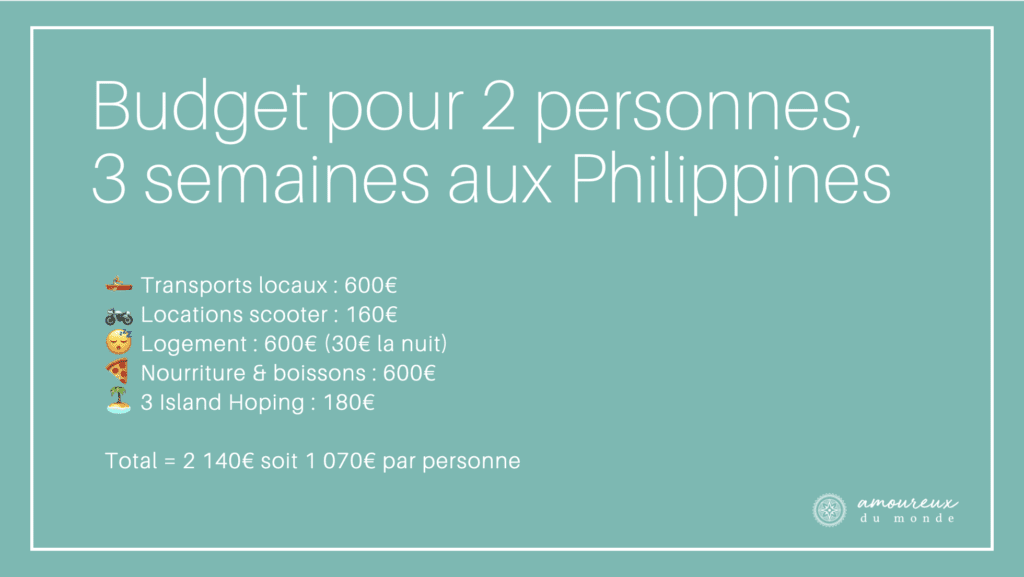
The Philippines : danger ?
To begin with, we didn’t get any vaccinations to travel to the Philippines. If you feel the need to do so, contact your GP.
The Philippine islands on our 3-week itinerary are generally safe. However, there are some areas that are considered risky in the Philippines, particularly all the islands to the south. The region is notorious for its jihadist groups. However, you should be aware that 80% of the Filipino population are Catholics, with the Muslim religion accounting for around 5% of believers.
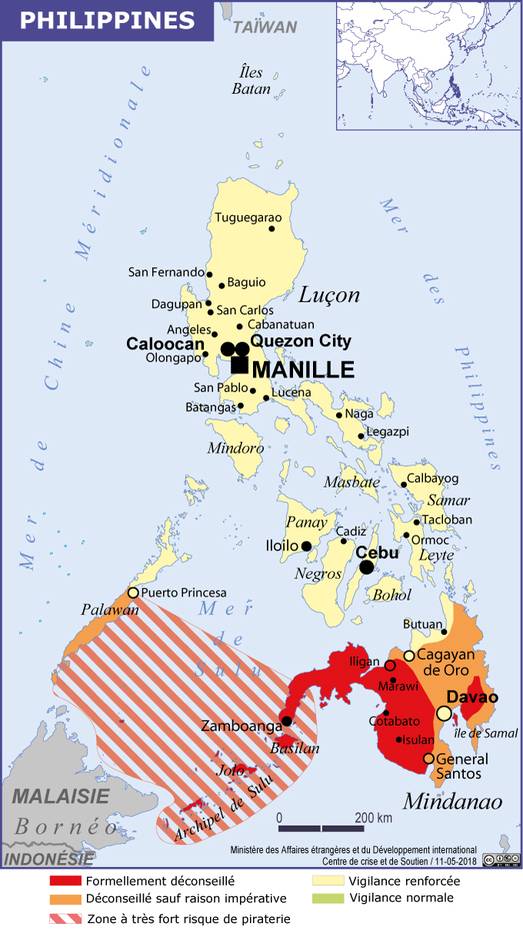
What are the specialities in the Philippines ?
Update 2023 : The culinary specialities of the Philippines are a delicious blend of flavours and cultural influences. Dishes such as adobo, a mixture of marinated meat simmered in a tasty sauce, or sinigang, a sour soup made from tamarind, are must-tries. Delicious meat kebabs, known as “kawali”, and lumpia, Filipino spring rolls, are also very popular. Not forgetting sweet desserts such as halo-halo, a refreshing blend of fruit, ice cream and condensed milk. Filipino cuisine is a real feast for the taste buds and offers an unforgettable culinary experience.


